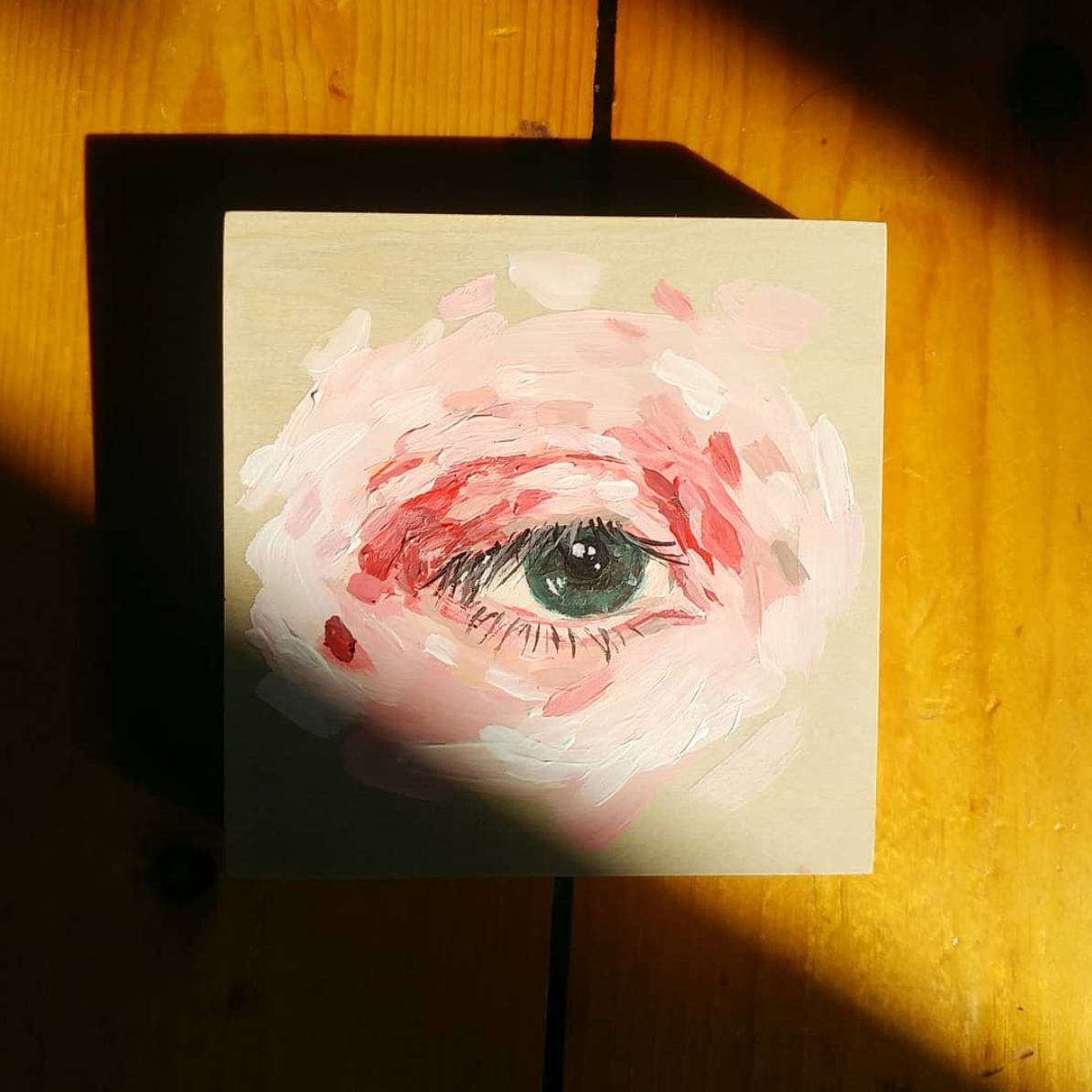I’ve been painting eyes in the style of other artists with unique styles that I really like: @nogobed @amdebrincat and @ellysmallwood (these are all instagram handles)
Eyes are similar across many organisms and the receptors that convert light information to signals (opsins) for the cell to use is similar across all organisms. What this means is that light-sensitivity evolved very few times and evolution just kept building on those scaffolds. At the basic level, we have single-celled organisms with light sensors to direct movement (like to move toward light for cells that depend on photosynthesis). Then we have progressively more complicated eyes that can distinguish colors and shapes. In the process of eye evolution, animals ended up with eyes that are very specific for surviving in a particular environment. For example, some eyes are really sensitive in the dark ( like owls and cats), others have rectangular pupils for a 320 field of vision (goats), and others have foot-ball sized eyes (giant squids)!
What I find interesting about eye evolution is that given a patch of light sensitive cells, this patch will concave deeper and deeper for acquiring more information because with a slight depression, you can get some directionality of light source. (Of course, this is evolutionarily speaking, so these physical changes won’t be happening with one tissue but rather over time across generations.) Then, as the light-sensitive patch will continue to sink deeper to form an almost complete concave bubble for directional sensitivity. A lens at the opening of this “bubble” can also form to help with focusing. Although the eye seems like this incredible organ made by intelligent design, there is a reasonable natural step-by-step process.
Eyes have all sorts of colors – green, blue, brown, red (albinism). Melanin is a protein that colors these eyes and its is the same protein that leads to differences in our skin and hair color. In our skin, melanin helps protect against the harmful components of a sun light (or rays). Our ancestors are thought to have had dark hair and eyes, but lightened as they moved to areas with less direct sun (away from the equator). With less direct sun rays, the heightened amount of melanin was not necessary. Eye and skin color is thought to have lightened at the same time, through association, after this migration. (Note that eye and skin color are controlled by multiple genes, so it’s more complicated than a gradual mutation of a single gene.)



The pink one referenced @nogobed while the colorful one replicated @amdebrincat and the brown one referenced @ellysmallwood
Originally posted on Instagram September 18 – 11, 2018

No Responses